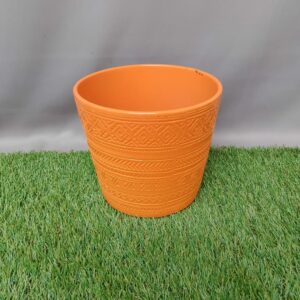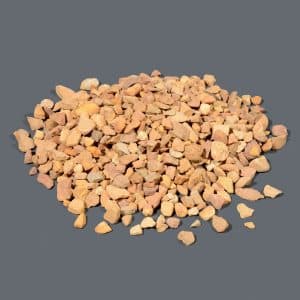Climbers Climbing the old Walls
Trees, hedges and borders

Climbers Climbing the old Walls
A range of different plants and techniques can make a boring bare wall look beautiful. Olga tells you how.
In our modern society, everybody builds walls and puts up fences to keep the dogs in and the trespassers out. If a bare, newly built wall, even if painted a nice colour, becomes boring, why not camouflage it?
Antique walls and garden ornaments
Keeping in mind the style of your home, you can give your brick or rock wall a feeling of antiquity and even introduce crevices or pockets to plant something in the wall, and give the feeling that nature has taken over. Support these young plants with old nylon stockings anchored to the wall with steel nails and keep moist. Eventually the roots will anchor themselves properly. Help algae to grow on the wall. Make a thin paste of flour and milk; add a dash of liquid seaweed fertilizer and some yogurt. You can add pieces of moss or lichens into your mixture. Paint it over the wall surface and let it dry. It will help if you can keep it moist or misty, without washing your paste of. If you are really into the antique look, paint cement-based garden pots and furniture in the same way and they will soon look as if they have been there forever.
Climbers as a cover-up
The best way to cover an unsightly wall would be to cover it with climbers or shrubs, preferably using evergreen plants. There are a few thins to keep in mind. You need to give the climber some support as it grows, leading it gently where you want it. Plants with strong tendrils seem to find their own way to a large extent, but give a helping hand if necessary. Ivy and Virginia creepers are two of the few climbers that latch onto a rough wall surface. Prepare a nice hole of about 50 x 50cm, give a generous helping of compost and add about two cups of bonemeal. Fertilizer can be given after about two weeks. When choosing a climber, make sure that you have sun-loving plants for a sunny wall and shade-loving climbers on shaded walls. Suggested plants are bougainvillea available in many colours: Mandevilla splendens, pink or white tubular-shaped flowers; potato vine Solanum jasminoides, blue or lilac; honeysuckle Lonicera japonica, pale yellow and white or pinkish-yellow-white; Zimbabwe creeper Podranea brycei, pink; black-eyed Susan Thunbergia alata, yellow, orange or brick-red with a black center; and many others. There is also a very wide range of lovely and thorny climbing roses available and they flower for about eight months a year. Ask your local nursery what grows best in your area.
Climbers or shrubs in pots
If you want to brighten a wall where there is wall-to-wall paving on a patio or in a courtyard, you could grow climbers or shrubs in tubs. Just make sure that the container is big enough for quite a few years. After that the pot may restrict the growth of the plant. The plant can, however, be kept perfectly healthy and happy by trimming, regular watering and feeding.
Espaliering an art
Espaliering is the art of training fruit trees to grow flat against a support. Plant a young fruit tree as close as possible to any wall. Then erect four or five horizontal supports, wire runners or frames, and tie the tree, branch after branch as it grows. Two new, strong branches are tied and trained sideways along the bottom horizontal supports. The growing tip is left intact to grow up to the next support where next two branches will be trained sideways. Continue like this until the growing tip reaches the top of the wall where it can be clipped. Prune the braches to maintain a shape that you like. Can you imagine the beauty of an espaliered lemon tree full of blossoms on your patio, and better still, full of yellow lemons all along the wall!Enjoy your beautiful walls
You might also like
Shop online
-
- Sale!
SAVOUR EXIGENT 400G , 2KG , 4KG OR 10KG
- R91.99 – R1,299.99
- Select options This product has multiple variants. The options may be chosen on the product page Learn More
-
- Sale!
POT COVER CERAMIC LINA MANDARIN GLOSS TRIBAL 16.5 CM
- Original price was: R399.99.R279.99Current price is: R279.99.
- Add to cart Learn More
-
PLASTIC WALL BRACKET WHITE / TERRA / GREEN / BLACK
- R44.99
- Select options This product has multiple variants. The options may be chosen on the product page Learn More
-
DRAINAGE CHIPS
- R69.99 – R99.99
- Select options This product has multiple variants. The options may be chosen on the product page Learn More




